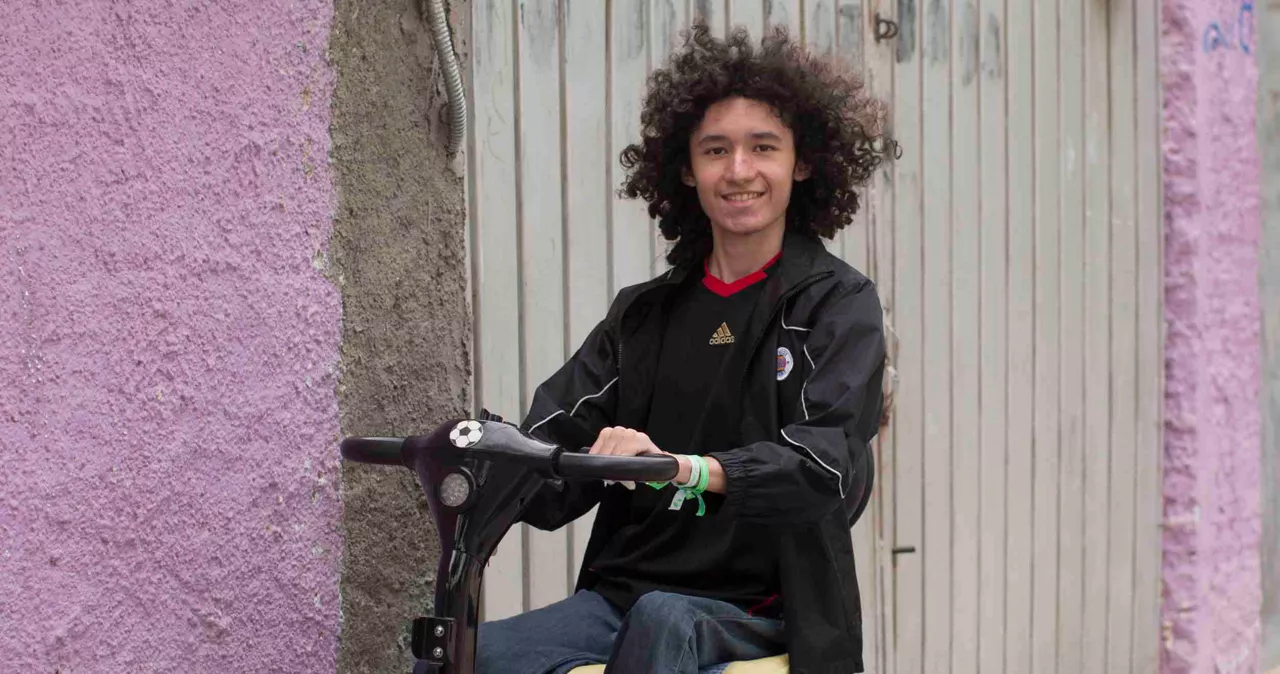
What is Elective Orthopaedic Surgery (EOS)?
For people living with haemophilia, bleeds can sometimes occur into the joints, especially hinged joints, such as, knees, elbows and ankles. If these bleeds happen multiple times into a joint then the joint could become damaged and degraded, potentially leading to arthropathy or 'arthritic damage' which may benefit from surgery. The following video will provide more information about arthropathy.
Elective orthopaedic surgery or 'EOS' can refer to a wide range of surgical procedures, from less invasive minor surgery, such as the removal of fluid from a joint, through to a potential joint replacement. Elective means that this type of surgery is planned, rather than urgently necessary. EOS can have a number of benefits, such as, helping to mobilise the joints and reduce any pain associated with the joint, ultimately improving quality of life.


REDUCE JOINT PAIN

IMPROVING LIFE QUALITY
It is important to remember that EOS is a decision made between the person living with haemophilia and the healthcare team. With new treatment options, it is hopeful that EOS will not be needed; however, if it is, we hope these pages can provide you with enough information and support that you feel able to have an open discussion with your healthcare team about EOS.
Types of Elective Orthopaedic Surgery (EOS)
There are several different types of EOS ranging from removing excess fluid from a joint, to joint replacement surgery. The following information is for information purposes only and the type of EOS procedure will be decided by the MDT based on the individual person's needs.
Joint aspiration (arthrocentesis)
Joint 'aspiration', or 'fluid removal' can sometimes be performed to alleviate associated pain and to debulk the joint blood in the elbows, knees or ankles as the result of recurrent bleeds. It involves removing fluid directly from the joints with a needle and fluid is drawn out into a syringe (aspirated). This procedure can usually performed as an outpatient, using a local anaesthetic. The procedure should only take about 5–10 minutes. Hip or shoulder aspiration, however, are considered to be orthopaedic procedures and will need to be carried out under anaesthesia in an operating theatre.
Synovectomy and synoviorthesis
The space inside a joint is surrounded by a membrane called the synovium and is filled with a lubricant called synovial fluid. Recurrent bleeding into a joint means that the joint can reach a state of chronic inflammation (synovitis) that increases the risk of bleeding. The swollen membrane (synovium) tissue lining can be removed to decrease the frequency and intensity of bleeding into the joint. This can be done either by synoviorthesis or synovectomy. Synoviorthesis is non-surgical removal of the swollen membrane (synovium) using chemical or radiological infusions. The chemical or radioactive compound will be injected into the joint. Synovectomy is a surgical removal of the swollen membrane (synovium).
Total joint replacement (arthroplasty)
Total joint replacement or 'arthroplasty' involves removal of the damaged bone and joint tissue and replacement with metal, ceramic or plastic prostheses; however are generally only needed for severe pain or disability. Total joint replacement is a surgical procedure that requires a rehabilitation programme and preventative measures to avoid infection. The procedure requires around a 2 weeks stay in hospital and is performed under a general anaesthetic. During the hospital stay, factor levels are monitored to control any bleeding episodes, and a physical therapy programme is provided.
The following video will provide more information about different surgical procedures. Also, if you wish to read about any procedures in more detail, download the EOS booklet.
What are the benefits and risks of Elective Orthopaedic Surgery (EOS)?
Many people living with haemophilia worry about the risks of EOS, so much so that it can even stop them from considering surgery.

Will they be able to stop any bleeding during the surgery?
Is it worth it? Will there be any improvement in mobility?
What about complications in surgery such as serious blood clot?
What about missing school or work?
Will the post surgical pain be worth it?
It is natural to consider the risks of any surgery; however, EOS can provide a number of positive outcomes and benefits, and the safety of the surgery has been widely studied.
Potential benefits

Reduction in joint pain

Improved movement

Improved alignment of a damaged joint

Fewer bleeding episodes

Improved quality of life
Potential risks

Surgery complications include those associated with the anesthetic and those related to the surgical procedure. These risks/complications are not unique to the people with haemophilia but are what any person undergoing these operations would face.

These risks/complications are not unique to the people with haemophilia but are what any person undergoing these operations would face

The most common risk associated with surgery is infection

The post-operative complication most seen is excessive wound hematoma

Post operative pain in the joint
Your healthcare team will discuss any potential risks and benefits with your during the consultation.
Could Elective Orthopaedic Surgery (EOS) be indicated for me or my loved one?
Do any of the below points sound familiar to what you and your loved ones might be experiencing? If so, then please consult your healthcare team about EOS.
- Bleeding into a joint is common, although this is usually the main reason for surgery
- Other options that you’ve tried (e.g. rest, splinting, mobility aids do not reduce your pain)
- Pain is making it difficult for you to sleep.
- You have tried different pain medications but they do not lessen the pain, or a pain medication that was working no longer works
- Pain and loss of function is reducing your ability to care for yourself in daily life, such as washing and dressing

Find out more
If you want to find out any more information or support on any of the points discussed on this page you can download the ACT EOS journey tool.
Related pages
References
- Novo Nordisk, EOS in People with Haemophilia, 2013
- Rodriguez-Merchán EC. EFORT Open Rev 2019;4:165-173
- Rodriguez-Merchan EC. Semin Hematol. 2008;45:S58-63
- Luck JV Jr et al. J Am Acad Orthop Surg. 2004;12:234-245
- Dekoven M et al. J Med Econ. 2012;15:305-312
- Escobar MA et al. Haemophilia. 2018;24:693-702
This material is for educational and informative purposes only. It should not replace any advice or information provided by your haemophilia specialist and/or other healthcare professionals. Surgery in patients with haemophilia (with or without inhibitors) can carry specific risks that should be carefully assessed and discussed with your haemophilia specialist and multidisciplinary care team. Surgery in patients with haemophilia (with or without inhibitors) should always be done in consultation with a specialised haemophilia treatment centre.




